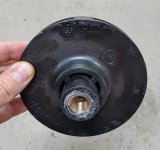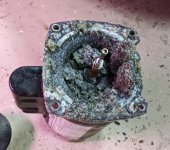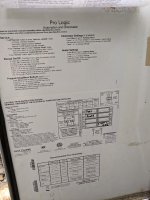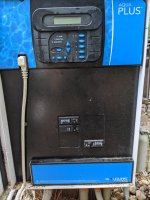Hello! The short version is that I need a new pump. My current one is dying and has been having trouble priming.
22000 gal in-ground salt-water pool
2 skimmers, 1 main drain, sand filter
The pump is probably 3-4 feet higher than the pool water level and is approximately ~15 feet from the pool itself, all due to landscaping/yard layout. It has been this way since it was built ~12 years ago.
Current pump/motor info: single speed Hayward (wired at 230v), 12 years old:
Hayward Tristar single speed: SP3210EE (1.85 THP, 1.0 FRHP, 1.85 service factor)
Motor details: SP3210Z1BER
I used to run it anywhere between 8-12 hours a day, and I swear that at least $100 a month of my power bill is due to this thing, it seems like a power HOG. I have been talking to Inyo and they have been really helpful, and they have recommended the V-Green 1.65 (ECM16SQU), which is only 1.65 THP versus my current 1.85. But in reading its manual, I see the prime speed is 2400RPM (whereas my single speed is 3450 as it all-or-none), and I'm concerned that the new pump won't have enough muster to prime the lines.
I read that this pump can have its prime speed and duration increased, but it requires a $270 controller that is not even in stock. Given that the pump itself is $475, I am suspecting that if I need that controller to get my pool to prime, I could probably buy a whole different pump/motor for that combined price. Also, in getting a new impeller, back plate, and diffuser I am now up to ~$750, which I suspect is getting close to the price of other combined full full pump/motor units.
So at this point, I am seeking to see if this is a fair replacement for my pool, or if its going to be underpowered for priming or in general. It would be nice to replace the entire pump as the current pump/basket is 12yo but it does look like it's in good shape and I don't want to spend money just for fun .
.
Any recommendations would be most welcome!
22000 gal in-ground salt-water pool
2 skimmers, 1 main drain, sand filter
The pump is probably 3-4 feet higher than the pool water level and is approximately ~15 feet from the pool itself, all due to landscaping/yard layout. It has been this way since it was built ~12 years ago.
Current pump/motor info: single speed Hayward (wired at 230v), 12 years old:
Hayward Tristar single speed: SP3210EE (1.85 THP, 1.0 FRHP, 1.85 service factor)
Motor details: SP3210Z1BER
I used to run it anywhere between 8-12 hours a day, and I swear that at least $100 a month of my power bill is due to this thing, it seems like a power HOG. I have been talking to Inyo and they have been really helpful, and they have recommended the V-Green 1.65 (ECM16SQU), which is only 1.65 THP versus my current 1.85. But in reading its manual, I see the prime speed is 2400RPM (whereas my single speed is 3450 as it all-or-none), and I'm concerned that the new pump won't have enough muster to prime the lines.
I read that this pump can have its prime speed and duration increased, but it requires a $270 controller that is not even in stock. Given that the pump itself is $475, I am suspecting that if I need that controller to get my pool to prime, I could probably buy a whole different pump/motor for that combined price. Also, in getting a new impeller, back plate, and diffuser I am now up to ~$750, which I suspect is getting close to the price of other combined full full pump/motor units.
So at this point, I am seeking to see if this is a fair replacement for my pool, or if its going to be underpowered for priming or in general. It would be nice to replace the entire pump as the current pump/basket is 12yo but it does look like it's in good shape and I don't want to spend money just for fun
Any recommendations would be most welcome!














